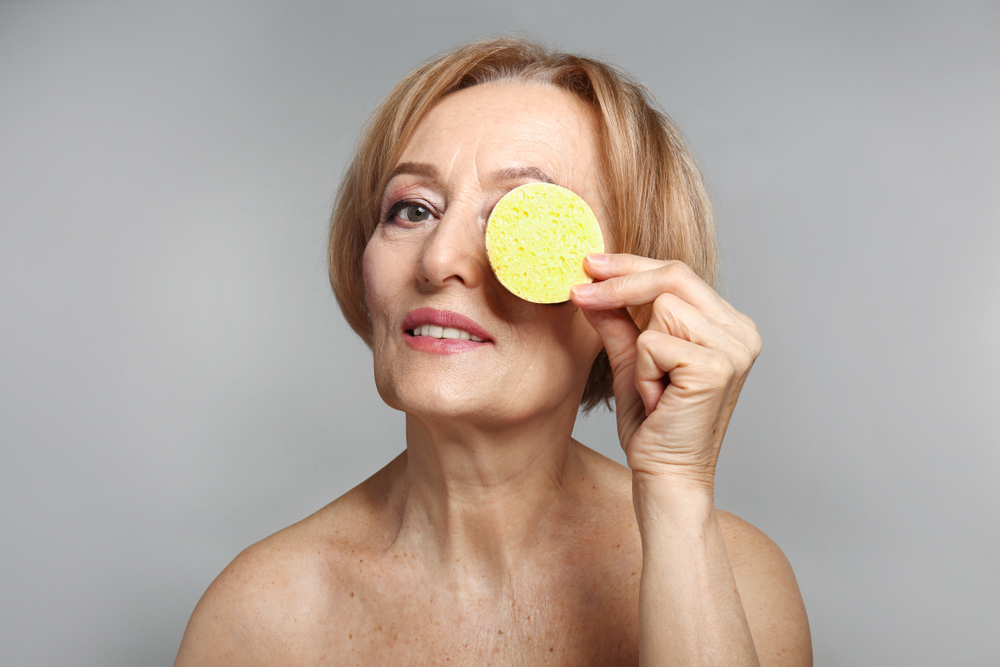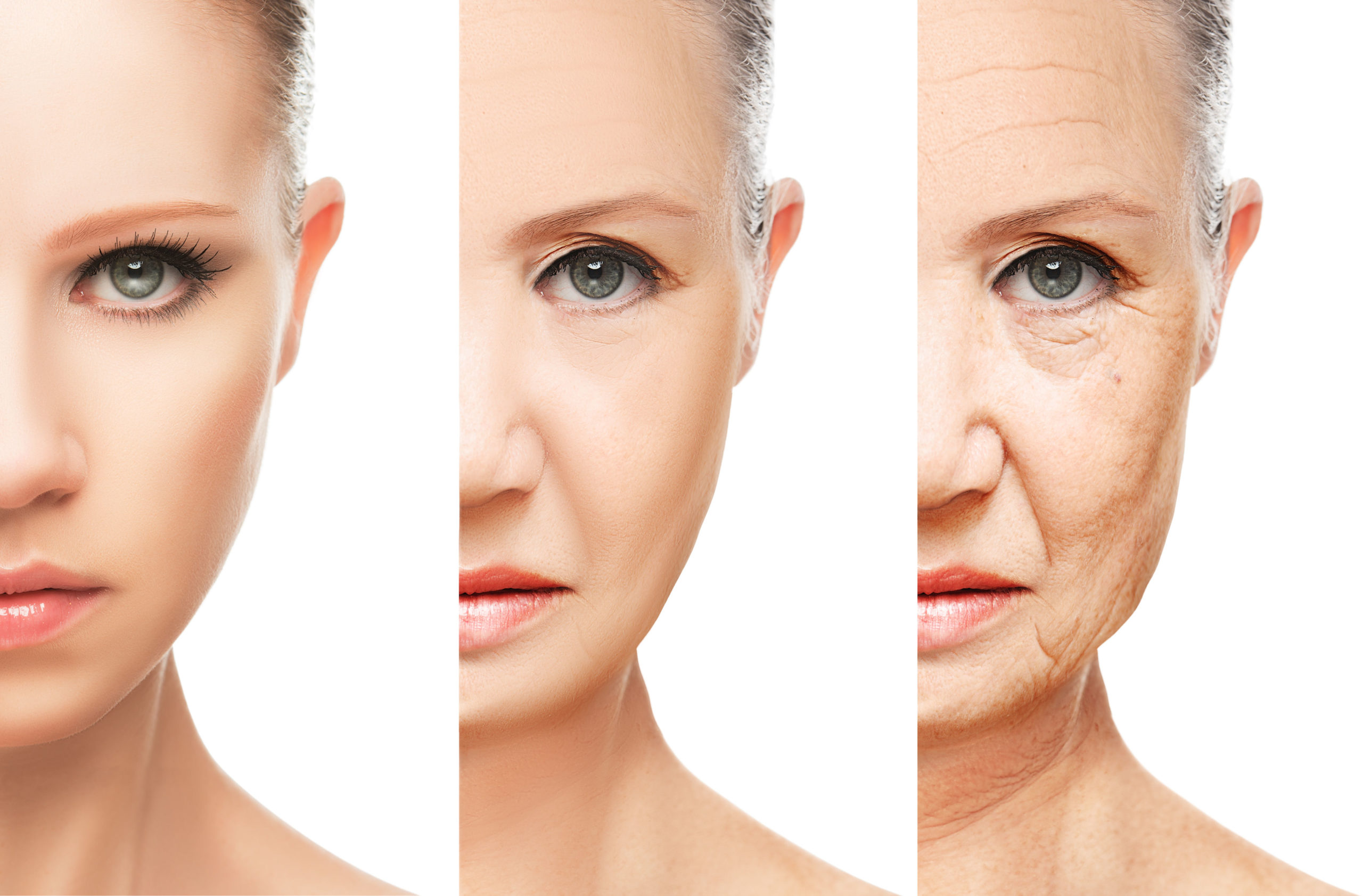Dropping Acid – Deciphering the 5 Primary Beauty Acids for Maximum Midlife Skin Health


Carrie Pierce has worked exclusively in the Health, Beauty and…
Arriving at Midlife is a privilege not everyone receives.
Reaching Midlife is indeed an achievement, and to some, all the blotches, wrinkles, gray hairs and pooch-y places that go along with it are a Badge of Honor; a testament to one’s endurance, stamina and bravery. Yet to others, those hallmark signs of Aging are unwelcome. VERY, VERY unwelcome. But there’s only so much that mainstream skin care products and protocols can do to help us cope with these Midlife issues- let alone overcome them.
If you’ve been a regular reader of this column – and also the Ask Carrie segment of Kalon Women Magazine – you know I’ve done everything within my power to arm you with all you need to know to make your skin care and beauty regimens as potent, effective and affordable as possible. You will also note that I’ve always stressed the importance of regular exfoliation as a way to keep skin fresh looking, polished and radiant. For the Record: There’s exfoliation and there’s EXFOLIATION.
The former is achieved by the regular use of polishing scrubs used topically to manually buff off dead cellar debris. The latter is achieved by the use of certain skin-friendly acids that not only digest away dead cellular debris, but lessen wrinkles, fade age spots and stimulate the supporting layers of collagen and elastin. This then creates firmer, younger looking and feeling skin, improving skin texture and providing ‘lift’. What’s not to love??!
This month’s installment will be one to pay special attention to as I introduce you to one of the most powerful weapons in the professional Skin Care Arsenal: Beauty Acids.

Meet: Alpha Hydroxy (AHA), Beta Hydroxy (BHA), Retinol, Glycolic and Kojic Acids…
When handled properly, your greatest allies in the War on Aging. When abused or handled improperly, your greatest foes. Here’s what you need to know:
Alpha Hydroxy Acid (AHA)—This is actually a group of acids that have their origin in food. AHA’s are usually composed of citric acid found in citrus, lactic acid found in milk, tartaric acid found in grapes, malic acid found in apples and glycolic acid from sugar cane.
AHAs work by digesting away dead skin cells and slightly evening out skin pigmentation, where hyper pigmentation is an issue. They are also known to be effective for treatment of acneic skin and skin that has been scarred by acne pustules.
During the process of clearing away dead skin cells, AHAs are also believed to work on the inner layers of the skin, creating a skin that is thicker and more resilient. And added long-term Beauty Bonus.
For treating the hyperpigmentation issue of Melasma, AHAs are thought to be effective, especially when combined with additional regular peels of 50% Glycolic. AHAs can be routinely found in lotions, creams and specialty products and purchasing them at a 10% or less concentration is believed to be safe and sufficient for most people. Anything over 10% concentration should be obtained by Physician prescription only.
If it’s dry skin or Melasma (hyperpigmentation) you’re looking to treat, AHAs can prove to be a great ally. Just be aware that they can cause sun sensitivity and also inflammation in highly sensitive skin types. Be mindful of excessive sun exposure when using!
 Beta Hydroxy Acid (BHA)- Unlike AHA, BHA comes from one primary acid: Salicylic. Aka: Aspirin. This makes BHA a gentle buffer acid that is most commonly used together with AHA but it accomplishes powerful stuff on its own too.
Beta Hydroxy Acid (BHA)- Unlike AHA, BHA comes from one primary acid: Salicylic. Aka: Aspirin. This makes BHA a gentle buffer acid that is most commonly used together with AHA but it accomplishes powerful stuff on its own too.
Because it’s aspirin derived, it’s thought to be highly anti-inflammatory. BHA is a powerful topical exfoliant and works by ungluing the cells of the epidermis, thus allowing them to slough off at a faster and more efficient pace.
Beta Hydroxy Acid is used mostly to improve the condition of wrinkled skin, help alleviate the telltale signs of sun damage and improve overall skin texture, especially in cases of acne.
In the category of effectively treating sun damage there is this caveat with BHA: using it can effectively treat sun damage—but at the same time- using it can actually make you more PRONE to sun damage so BEWARE! (The same can be said of all the Beauty Acids, but more on that in a bit…)
BHA is oil soluble, so it is much better able to deeply penetrate into skin pores and digest away cellular debris, which causes a deep cleansing- unlike AHAs which are water soluble and tend to do most of their work on the surface of the skin. Concentrations of 1 to 2% at a pH of around 4 are usually considered safe and effective for most skin types.
You’ve heard me say this before and I will say it again here: If you have an allergy to something, do NOT use that ingredient on your skin! What that means here is this: if you are sensitive to aspirin or allergic to it in any way BHA is NOT for you!
Now on to a real power house:
 Glycolic Acid- Glycolic Acid, although considered a benign AHA, is a heavier hitter than most other AHAs and comes in various strengths, ranging from OTC products that contain small amounts geared for regular everyday use, on up to professional grade levels of 30-70%. These are labeled Professional Use Only and require either a Dermatologist or licensed Aesthetician to administer.
Glycolic Acid- Glycolic Acid, although considered a benign AHA, is a heavier hitter than most other AHAs and comes in various strengths, ranging from OTC products that contain small amounts geared for regular everyday use, on up to professional grade levels of 30-70%. These are labeled Professional Use Only and require either a Dermatologist or licensed Aesthetician to administer.
Glycolic Acid digests away the dead outer layers of skin, revealing newer, fresher and younger cellular layers underneath. This type of peel is generally used to treat acneic skin and/or skin that has age-related hyperpigmentation issues with the goal being gentle yet effective removal of the top several layers of skin– where the most age-related damage has accrued.
The peel application process is relatively quick but can be a bit sting-y and is usually done in about -once- per-month/every- couple- of- week intervals at first (at usually a 50% concentration) in order to penetrate the skin and digest away the layers that are ‘glued’ together, as well as build up tolerance.
Regular Glycolic treatments cause the collagen to stimulate and replenish at a higher rate, which has a wonderful renewing effect. The skin begins to look lifted and firmer as peels progress.
Although considered relatively benign, Glycolic Acid is actually used to remove rust from metal and has many other industrial uses. It’s powerful stuff and needs to be treated with respect!
Again, I warn: if you’re using any type of acid treatment on your skin -or in skin care products at lesser strengths- protecting yourself from additional sun damage/exposure is crucial—especially if you have darker skin tone!
Glycolic is my personal favorite.

Retinol– Retinol is a derivative of Vitamin A and is known for being quite powerful. When used topically, it can increase cellular turnover, minimize pores, stimulate increase in collagen and elastin, fade hyperpigmentation and retexturize the surface of the skin.
Because it has more of a drying effect on skin tissues, it is great for use on very oily/acne-prone skin. It’s also used to treat skin that is heavily wrinkled (as from heavy smoking and sun exposure) and also skin that has heavy blotching.
Retinol can cause much more active peeling than does Glycolic and skin treated with Retinol (Usually as Retin A) requires fierce protection after treatment.
I use a Retinol-containing day cream but said cream only contains a very small amount of the stuff. The general school of thought is: if you’re using Glycolic, don’t use Retinol too and vice versa. Pick the acid that best addresses your skin care and beauty goals and stick with that acid.
But no matter what acid you decide to place in your skin care regimen, MOISTURIZE like crazy- day and night! They can all be drying and skin that is peeling and turning over at a faster rate can’t protect itself as it normally would.
Now for a final word on a relatively up and coming acid:
 Kojic- not to be confused with the bald, Lebanese Detective of 1970s TV fame (Kojak…) this acid is proving great for use by very darkly pigmented skins.
Kojic- not to be confused with the bald, Lebanese Detective of 1970s TV fame (Kojak…) this acid is proving great for use by very darkly pigmented skins.
Derived from mushrooms and rice malting, this acid is a fabulous skin lightener. It works by causing melanin production to ease/slow in the topmost layers of the skin.
Kojic acid is now being used in some skin creams and beauty potions and is thought to be more topical in effect. It doesn’t penetrate as deeply as the other acids mentioned above but if you’re looking for a more natural, less noxious way to lighten age spots, this little guy may fast become your very best friend!
Now a closing word:
It is considered wise to NOT apply acids on your throat area. This skin there is thinner than skin found on other parts of the human body and the pore quality is much smaller. As such, it’s easy to burn and over-treat this area. Also, be mindful of your eyes, eyebrows and lips when working with acids. I prefer to purchase my Glycolic in a gel format instead of a runny liquid for this very reason. Doing so allows me better control of where the product goes/stays when applied.
And, if and when, you use a peel, have a clock close by and WATCH THOSE SECONDS! It doesn’t take long to burn yourself – and acid burns are NOT beautiful!
© copyright 2017 Carrie E. Pierce all rights reserved.
 Health and Beauty has been Carrie E. Pierce’s career focus for over 28 years. Throughout her career, Carrie has served as: Guest and Corporate Makeup Artist for numerous major, international cosmetic companies and as a Hollywood film, TV and special effects makeup artist. She’s provided skin care and makeup services for the fashion industry, as well as restorative make up procedures for burn and scar patients, cancer patients, domestic violence survivors and women suffering with self-esteem issues. Carrie is a licensed Aesthetician, Certified Color Analyst, Menopause Skin Care Specialist, Author, Public Speaker and served as co host of the syndicated radio show ‘Magnificent Menopause & Beyond©’. It’s her mission and her passion to help women be the best they can be – especially as they move through Midlife! Find out more www.MidlifeMystique.com
Health and Beauty has been Carrie E. Pierce’s career focus for over 28 years. Throughout her career, Carrie has served as: Guest and Corporate Makeup Artist for numerous major, international cosmetic companies and as a Hollywood film, TV and special effects makeup artist. She’s provided skin care and makeup services for the fashion industry, as well as restorative make up procedures for burn and scar patients, cancer patients, domestic violence survivors and women suffering with self-esteem issues. Carrie is a licensed Aesthetician, Certified Color Analyst, Menopause Skin Care Specialist, Author, Public Speaker and served as co host of the syndicated radio show ‘Magnificent Menopause & Beyond©’. It’s her mission and her passion to help women be the best they can be – especially as they move through Midlife! Find out more www.MidlifeMystique.com
Author: Carrie Pierce
Carrie Pierce has worked exclusively in the Health, Beauty and Entertainment industries for over 30 years. She’s a Licensed Aesthetician, Certified Color Analyst, former Hollywood Film and TV Makeup Artist, syndicated Radio Talk Show Host and a published Author, specializing in Midlife Health and Beauty issues. It’s Carrie’s mission -and her passion- to help make Midlife the very best it can be- for women and men everywhere!

Carrie Pierce has worked exclusively in the Health, Beauty and Entertainment industries for over 30 years. She’s a Licensed Aesthetician, Certified Color Analyst, former Hollywood Film and TV Makeup Artist, syndicated Radio Talk Show Host and a published Author, specializing in Midlife Health and Beauty issues. It’s Carrie’s mission -and her passion- to help make Midlife the very best it can be- for women and men everywhere!



